Baking a gluten-free pie can initially feel overwhelming, but even beginners can make a perfect pie with the right tips and guidance. Let’s tackle common pie issues together in this gluten-free pie troubleshooting guide and build your confidence in the kitchen! You are going to love how well your gluten-free pies turn out!!
This post may contain affiliate links. Please read our Disclosure Policy.
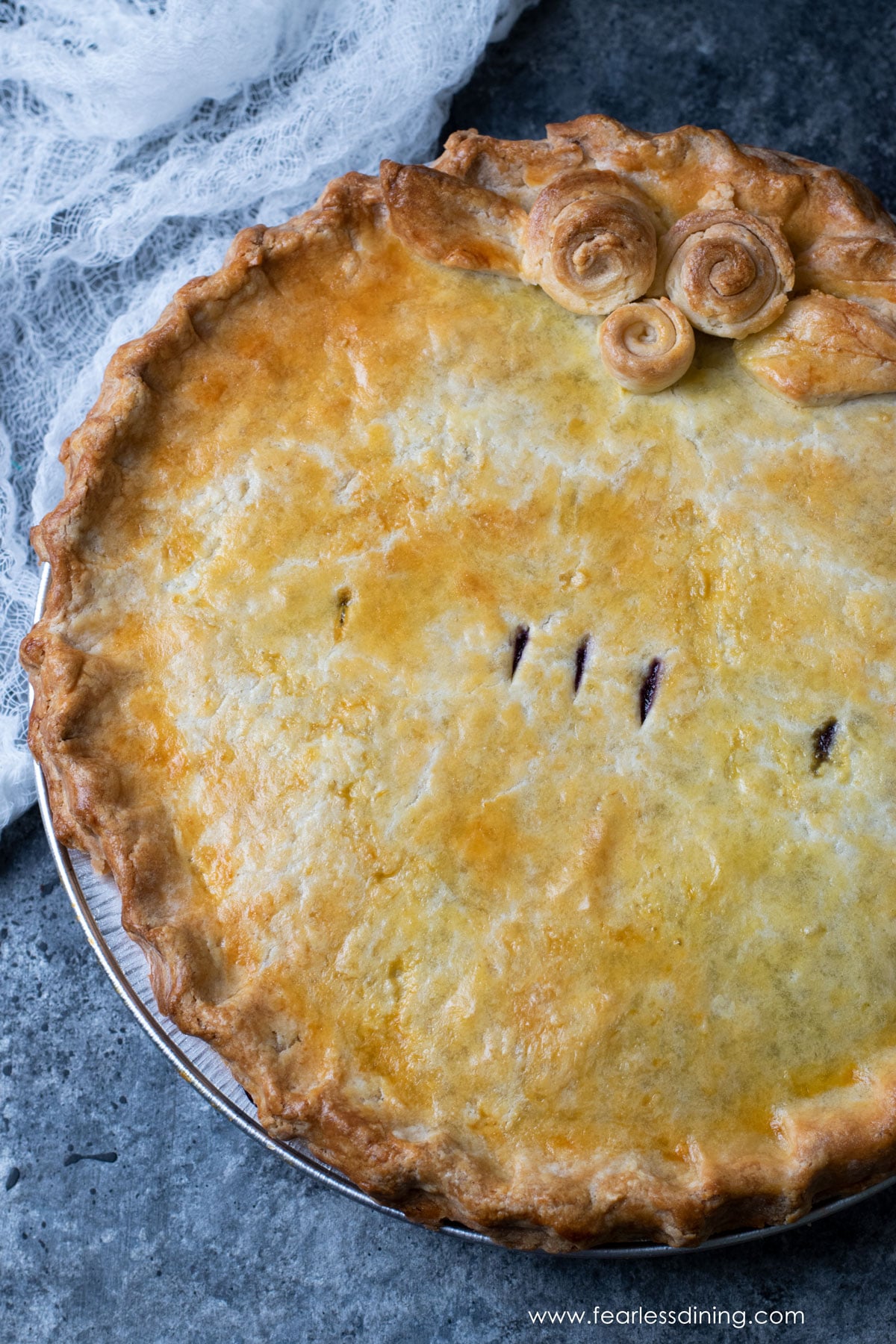
There is nothing like the perfect gluten-free pie. It should have a deliciously flaky crust and sweet pie filling topped with vanilla ice cream or whipped cream. Each buttery, flaky bite is a flavor explosion in your mouth. If you love pie but struggle to make a great pie, this article is for you. I am sharing all of my tips so you can bake the best gluten-free pies!
If you want to make a pie, start by using the BEST recipe. My popular Gluten-Free Pie Crust recipe. It is a reader favorite and gets so many rave reviews!
I have so many incredible homemade gluten-free pie recipes for you to practice on. Here are 50 Gluten-Free Pie recipes for every occasion!
Beginner Tips For Making the Perfect Gluten-Free Pie Crust:
- Measure Precisely: When measuring your flour, there are two ways I like to do this. The spoon method: You can also use a spoon to fill the measuring cup. Use a knife to level along the top to remove the extra flour. The leveling method: Put the measuring scoop into the flour and fill. Do not pack the flour. Use a knife to scrape along the top to remove the extra flour. You can also weigh the flour, but it gets tricky when every gluten-free flour blend has a different weight. This article explains why gluten-free flour blends have different weights and gives some interesting examples.
- Keep Ingredients Cold: Cold butter and water are essential for flaky crusts! There are two ways to get the cold butter into the dry ingredients, keeping them cold. You can use a pastry blender to cut the butter into the flour or freeze the butter and use a cheese grater to grate the frozen butter bits into the flour.
- Practice Patience: Gluten-free dough is delicate. Take your time and handle it gently. I find it easiest to move a pie crust to the pie pan by picking up the rolled dough on the silicone mat, inverting it over the pie pan, and then gently peeling the crust off into the pie pan.
- Experiment: Don’t be afraid to try different gluten-free flour blends and techniques to see what works best for you. Each blend has a different starch-to-grain ratio, which can affect how your crust turns out. Find the flour blend that works best for you. It took me a lot of trial and error before I decided using a silicone mat was my favorite place to roll out the dough.
The Pie Crust is Too Crumbly:
Problem: You are trying to roll your gluten-free pie crust to the perfect size and thickness. The dough fell apart when rolling or transferring the crust to the pie dish. This is a very common issue and has happened to me as well! Here are a few solutions to try:
Solution: Read this list and see which you can try to avoid crumbly crust.
- Add More Moisture: Gluten-free flours soak up more liquid than wheat flour. And to make it even more tricky, every gluten-free flour blend has a different starch-to-grain ratio. This means what works with one flour blend may not work with another without tweaking. Start with the amount of dry and wet ingredients the recipe calls for. After mixing the dough, if the dough feels dry, add more cold water or milk one teaspoon at a time until it comes together. (On the other side, if the dough is too sticky, add more flour.)
- Use a Binder: Gluten-free dough needs help staying together. Binders are very important in gluten-free baking Use a small amount of xanthan gum, guar gum, or psyllium husk to provide elasticity. You can read Why Binders Are Important In Gluten-Free Baking to learn more.
- Chill the Dough: When making a pie crust, using cold ingredients and cold dough is critical to get those flaky layers to stick together. Refrigerate the pie dough for at least 30 minutes, which will help it firm up and make it easier to handle.
- Roll Between Parchment Paper: Place the dough between two sheets of parchment paper or plastic wrap to keep it from sticking and breaking apart.
The Crust is Tough or Gummy:
Problem: You baked your gluten-free crust, and it turned out chewy or dense instead of flaky. This is another common problem that is easy to avoid.
Solution: Let’s break this down into simple chunks so you can analyze where your pie crust went wrong.
- Don’t Overmix or Overwork the Dough: Mix the ingredients until they are just combined. Overworking gluten-free dough can melt your butter, eliminating the flaky layers.
- Use Cold Butter: For flakiness, keep your butter or shortening cold. I like to place the butter in the freezer and then use a cheese grater to shred the butter into the flour. When the butter is frozen, it gives you incredible flaky layers. Soft or melted fat won’t yield the same result, and the crust will often be tough.
- Pick the Right Flour Blend: Look for a gluten-free flour blend for baking. Do not use a flour blend with bean flour, or your pie will have a bitter aftertaste. I wrote about which gluten free flour blends work in which types of recipes as a guide to help you.
- Pre-Bake (aka a Blind Bake): Depending on the type of pie you are baking, partially bake the crust before adding the filling. This helps it stay crisp and flaky.
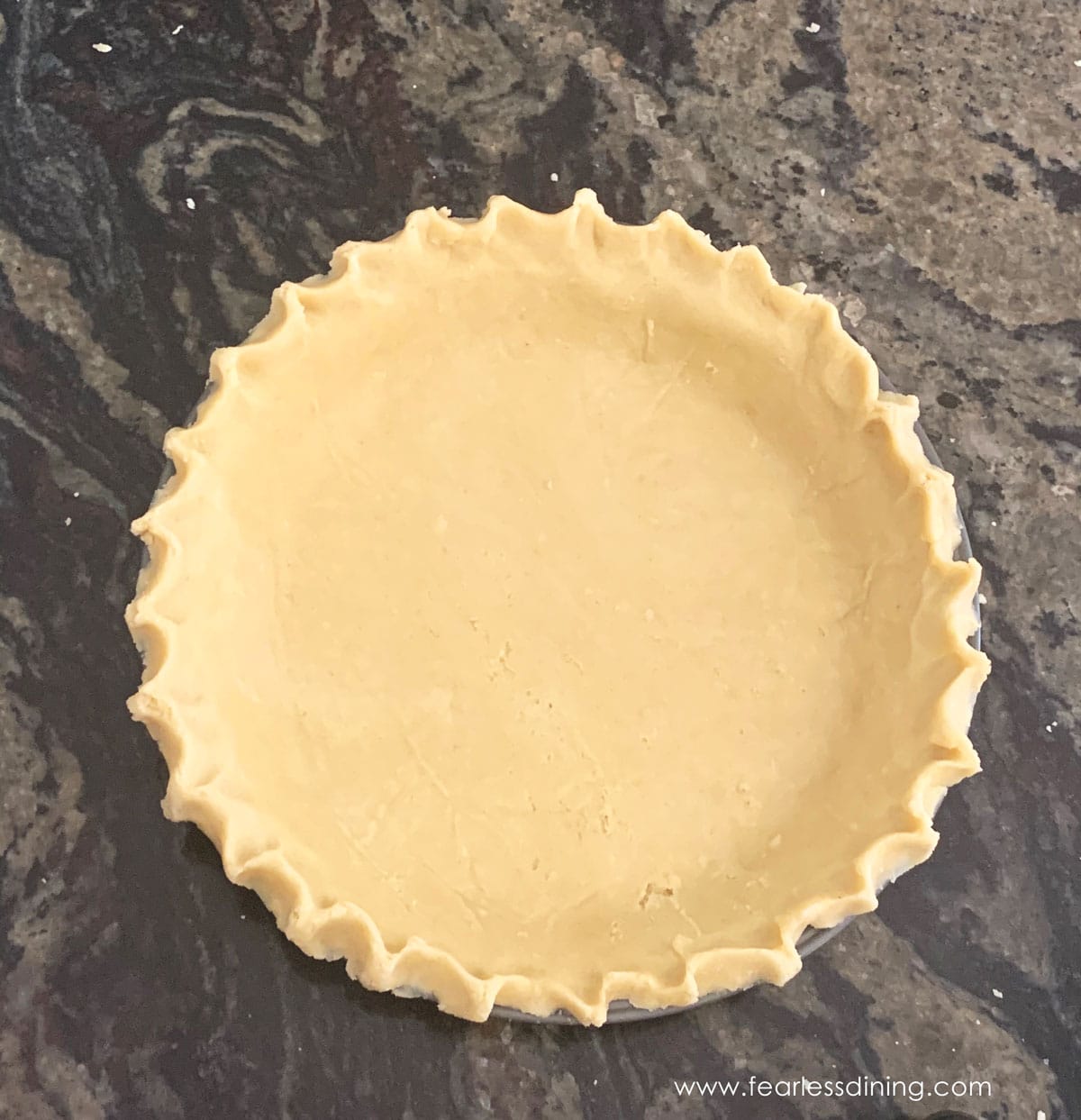
The Gluten-Free Dough is Sticky:
Problem: This one drives me crazy. I hate it when pie dough sticks to my hands, on a rolling pin, or on a work surface. You will see this often if you don’t use the exact blend used by the recipe writer because every gluten free flour blend has a different starch-to-grain ratio
Solution: Luckily, this is one of the easier pie crust issues to fix.
- Chill Thoroughly: If your butter is too wet, it is more melted and can add to the stickiness of the dough. Cold dough is much easier to work with! Pop it in the fridge for 20-30 minutes if it’s sticky.
- Dust the Surface: I always sprinkle a little gluten-free flour over my silicone mat and rolling pin. This helps prevent the dough from sticking to the mat or rolling pin.
- Roll Between Sheets: I don’t often roll dough between sheets. I find it easier to use the silicone mat I mentioned above. If you prefer to use sheets of plastic wrap or parchment paper to roll your pie crust, it will help prevent sticking.
- Adjust the Amount of Flour: If your dough remains sticky after chilling, add a tablespoon of gluten-free flour at a time until it’s workable. This is a common adjustment needed when using gluten-free flour.
The Crust Burns Before the Pie is Finished Baking:
Problem: The edges of the crust get too dark while the filling bakes. Nobody wants burnt pie crust edges. This is an easy problem to fix.
Solution: My favorite item is my pie crust shield. It is inexpensive and works very well. It washes easily, too!
- Cover the Edges: Use a Pie crust shield or strips of aluminum foil wrapped loosely over the edges of the crust to protect the crust edges from overbaking. Don’t forget to remove it after 10 minutes so the edges can bake golden.
- Lower the Oven Temperature: Baking at a slightly lower temperature for longer can help.
- Add Foil Midway: If the edges start browning too fast, cover them with foil halfway, or add the pie crust shield midway through baking.
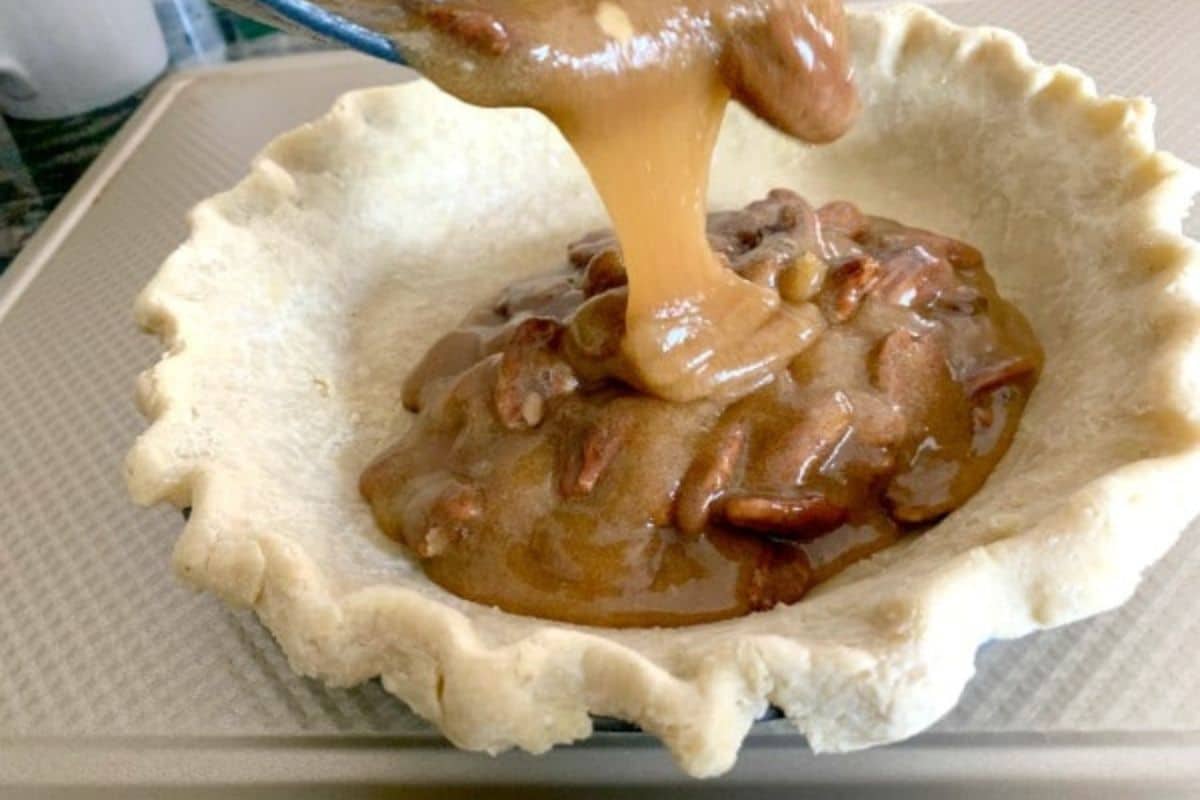
Email This Recipe To Me!
The Filling Didn’t Set:
Problem: How often have you made a pie and the filling is runny or didn’t firm up after baking? It can be so frustrating!
Solution: There are a few ways to fix this, but I find in many cases, one of these three reasons is the culprit.
- Use a Thickener: Gluten-free pies often need starch like cornstarch, tapioca starch, or arrowroot to thicken the pie filling. Be sure to mix these well before baking. If a cream pie recipe you are following doesn’t include one of these, read the reviews carefully to make sure it is a good recipe.
- Bake the Pie Fully: Make sure the pie bakes long enough. Custard pies, for example, need to reach specific internal temperatures to set.
- Cool the Pie Completely: Many pie fillings set as they cool. Be patient and allow the pie to rest before slicing. I also find letting the pie cool to room temperature on the counter and then finish cooling in the refrigerator can be helpful.
The Bottom Crust is Soggy:
Problem: The bottom crust turns out wet or undercooked. A soggy can make a pie so gross. Don’t let this happen to you.
Solution: Here are some easy ways to ensure your pie crust doesn’t have a soggy bottom.
- Blind Bake the Crust: Pre-baking the gluten-free crust for even 10 minutes can help create a solid base that resists becoming soggy when the pie filling is added.
- Preheat Your Baking Sheet: Place the pie pan on a hot metal baking sheet in the oven to cook the bottom faster. This is a trick I often do. It is easy to do, and as a bonus, the baking sheet can prevent any pie juice from getting on the bottom of the oven.
- Brush with Egg Wash: Before adding the filling, lightly brush the crust with beaten egg white and bake briefly to create a moisture barrier. I haven’t personally tried this one, but several of my readers have recommended this tip.
The Crust Needs More Flavor:
Problem: The crust is flaky but tastes bland. This is another easy thing to fix.
Solution: Here are some tasty ways to add some flavor to your pie crust.
- Add More Seasonings to the Dough: Add a pinch of salt and/or a teaspoon of sugar to enhance the flavor. My friend, Jenni, wrote a great article about how salt enhances the flavor in baking.
- Use High-Quality Butter: Great butter makes a big difference in taste. I love using European butter when making my pie crust because it has a higher fat content.
- Flavor Add-Ins: Try adding spices, a flavored extract, or even grated cheese for unique flavors. I even like to add a little lemon juice as well to boost flavor. For savory pies, grated cheddar cheese can add so much flavor to the crust! I used grated cheddar cheese for this Gluten Free Hatch Chile Apple Pie recipe…it is a sweet pie with a kick of spice!
If you have loved this gluten free pie troubleshooting guide, I have more troubleshooting guides to help you become the best gluten free baker!
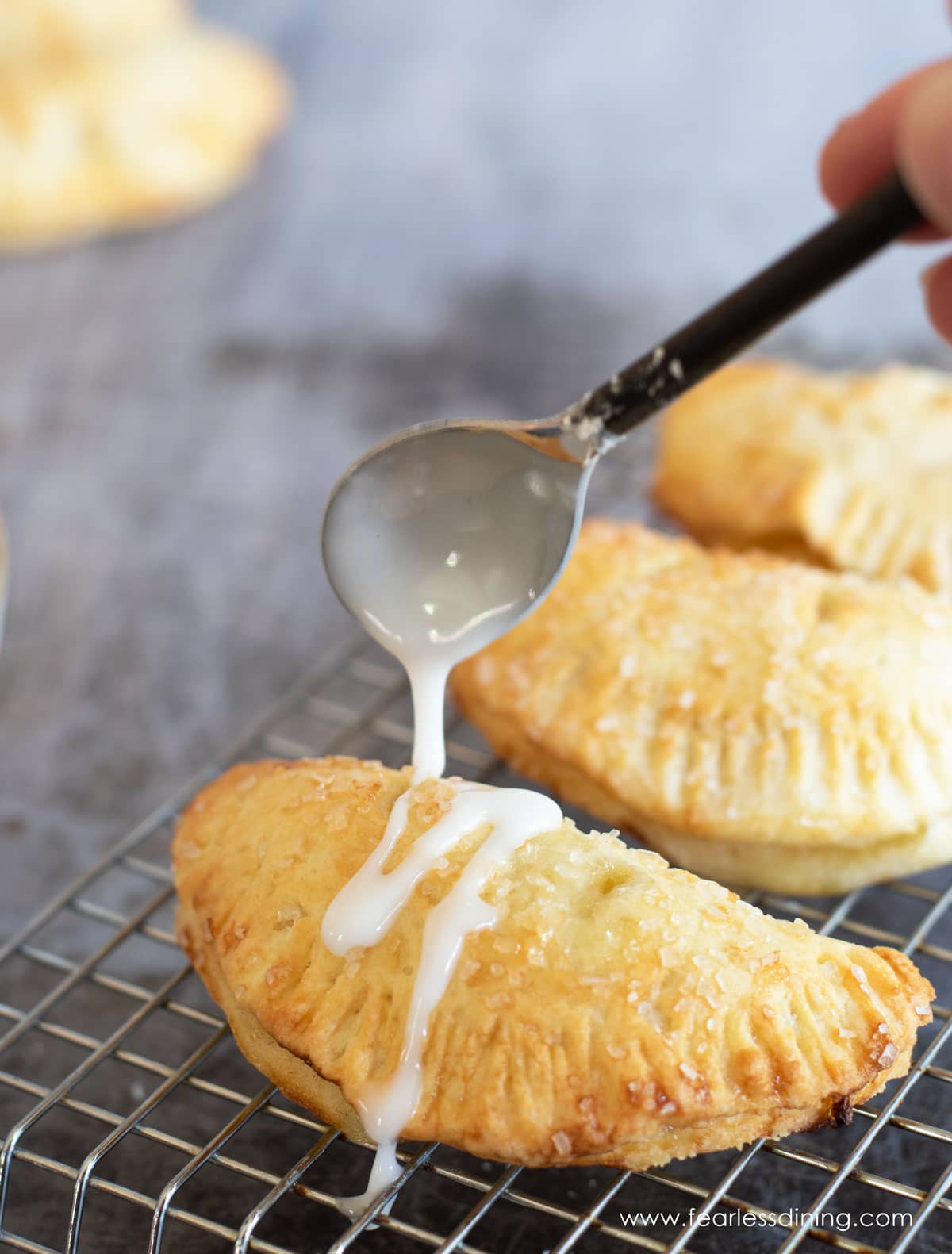
Creative Ways to Use Gluten-Free Pie Crust:
Don’t limit yourself to traditional types of pie recipes—gluten-free pie dough is incredibly versatile! Here are some fun and easy ways to use it:
- Hand Pies: Hand pies are a special treat. They are easy to make and fun to eat. You can even make Gluten Free Hand Pies in your air fryer!!
- Pop Tarts: Who doesn’t miss those classic Pop Tarts we had in our youth? I decided to create my own Gluten Free Pop Tarts recipe to satisfy my craving for this delicious family favorite.
- Mini Tarts: Use mason jar lids to create bite-sized tart shells. I used them to make mini single-serving Gluten-Free Grape Galettes. You can also fill it with custards, fruit, yogurt, or even chocolate ganache for elegant desserts.
- Quiche Crusts: Use the dough as a base for gluten-free quiches. Pre-bake the crust before adding the egg mixture to ensure it stays crisp. Try this fun Gluten Free Quiche recipe.
- Lastly, a pie crust can be used to make this British Gluten Free Bakewell Tart.
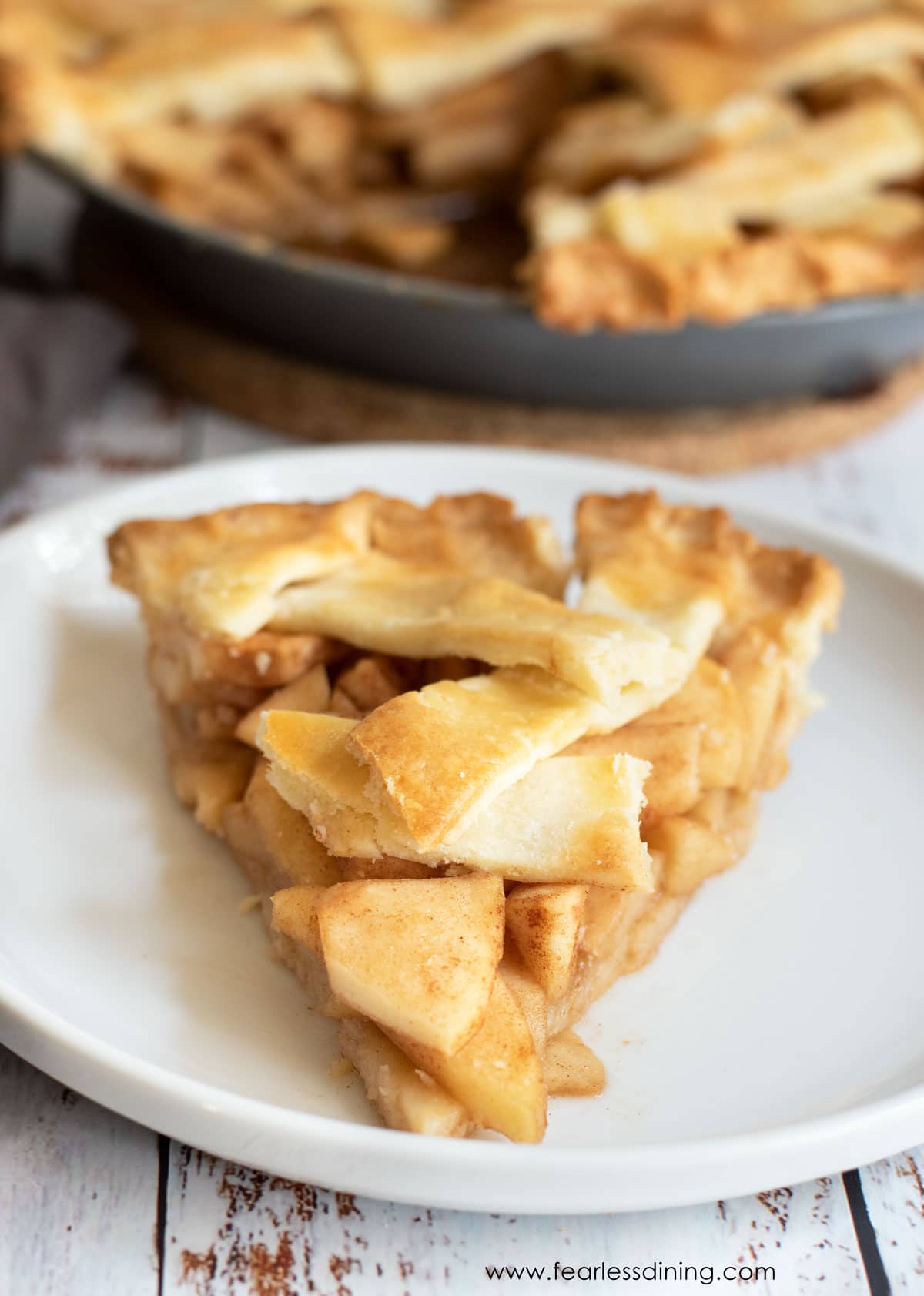
My Best Gluten-Free Pie Recipes:
- Mom’s Best Gluten Free Blueberry Pie
- Gluten Free Strawberry Pie
- Easy Gluten Free Mixed Berry Pie
- Homemade Gluten Free Pecan Pie
- Gluten Free Derby Pie
- Gluten Free Apple Pie with Lattice Crust
Have a favorite tip?
We would love to hear if you have a great gluten-free pie-making tip that you can share. Please leave a comment. Thank you!

